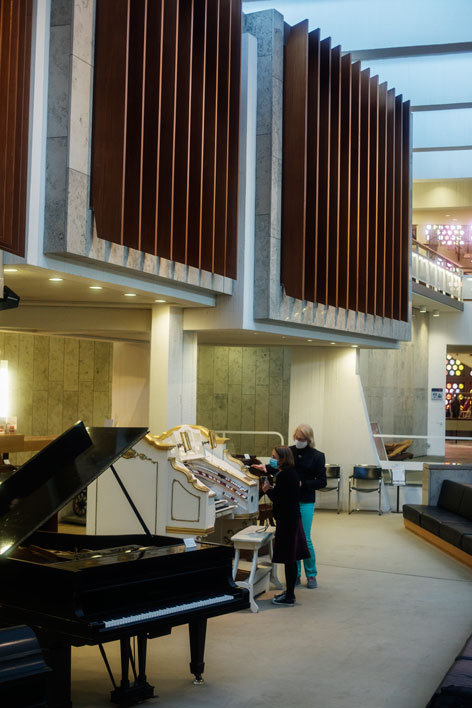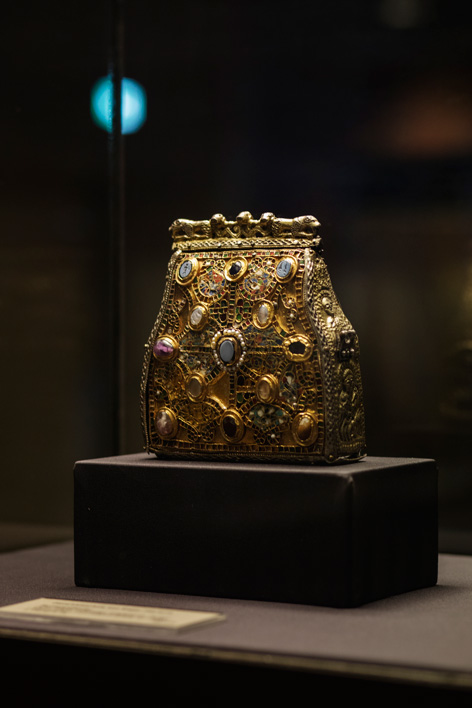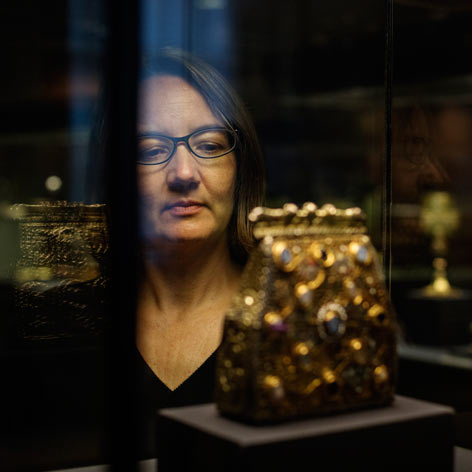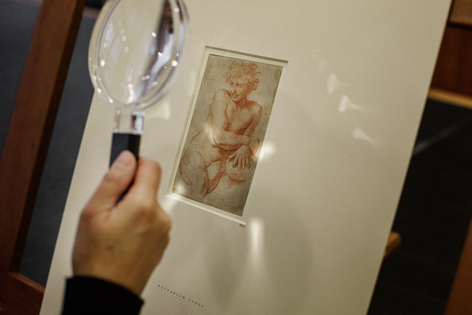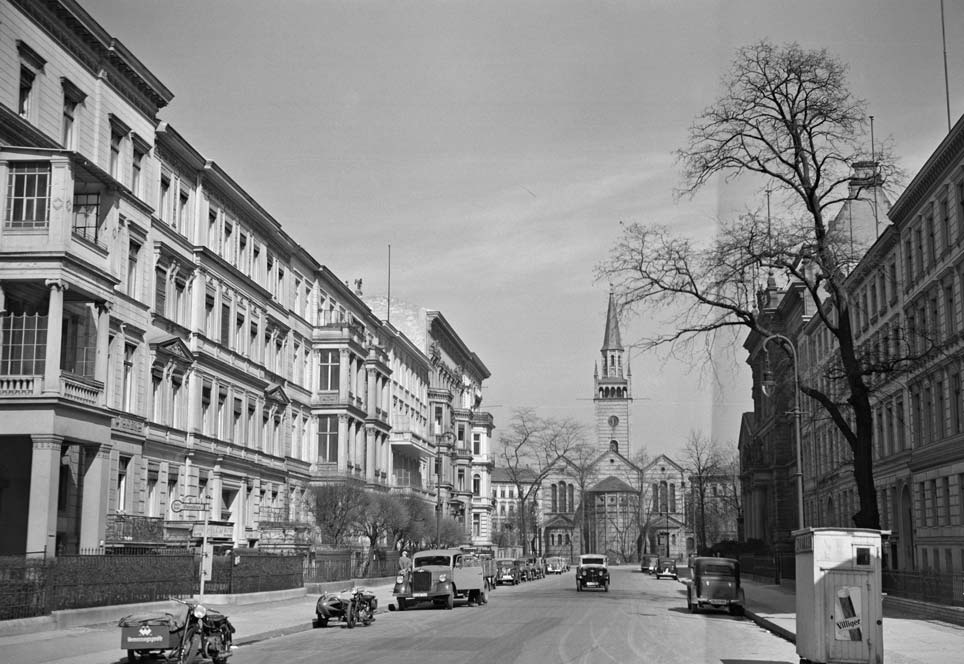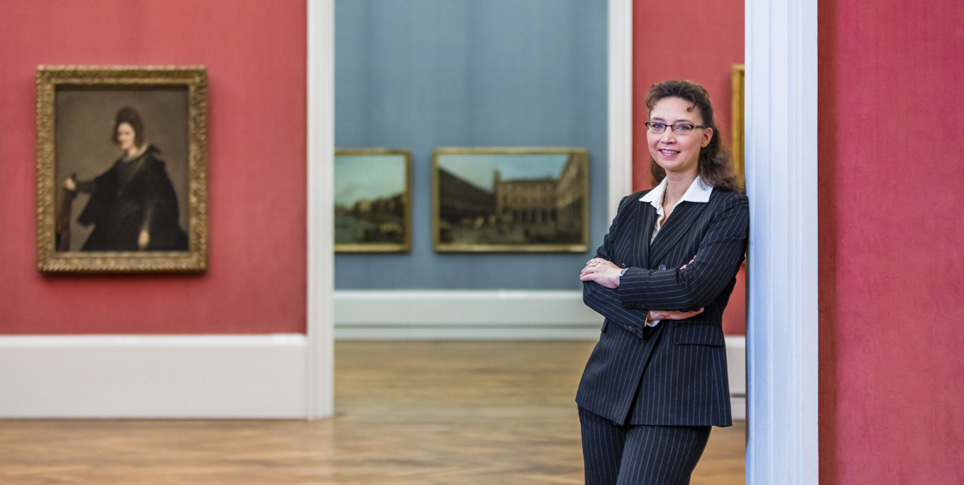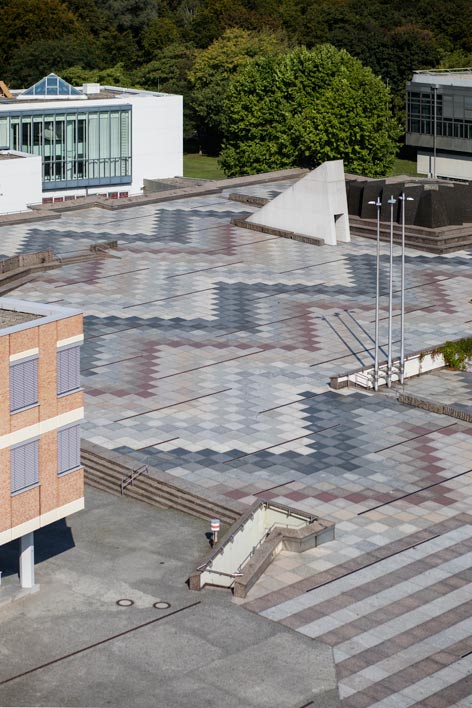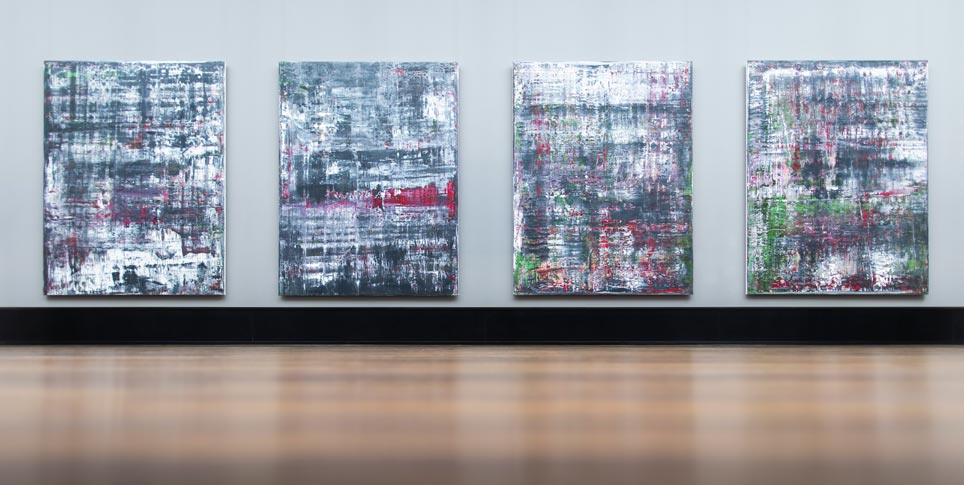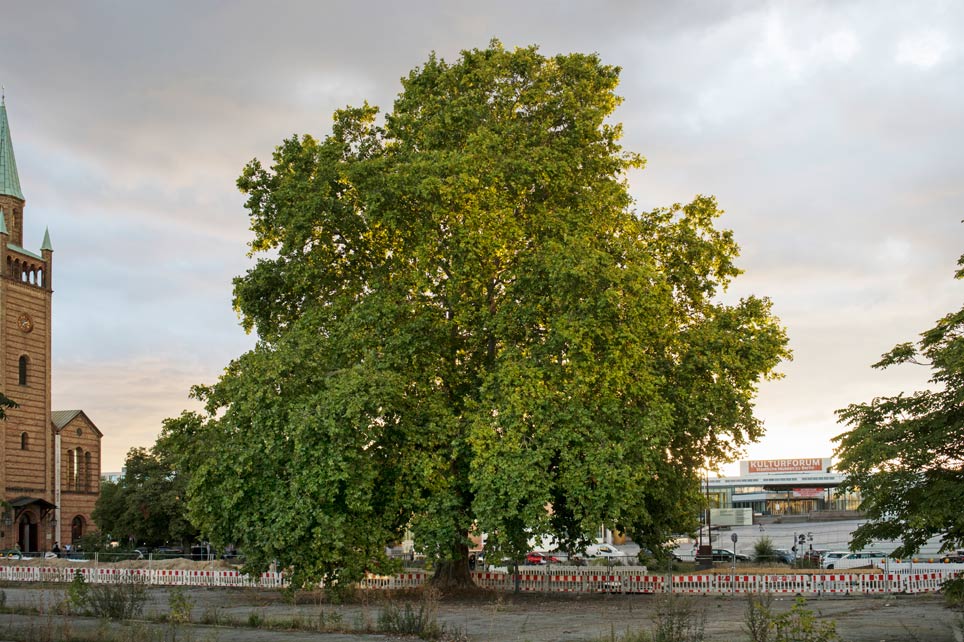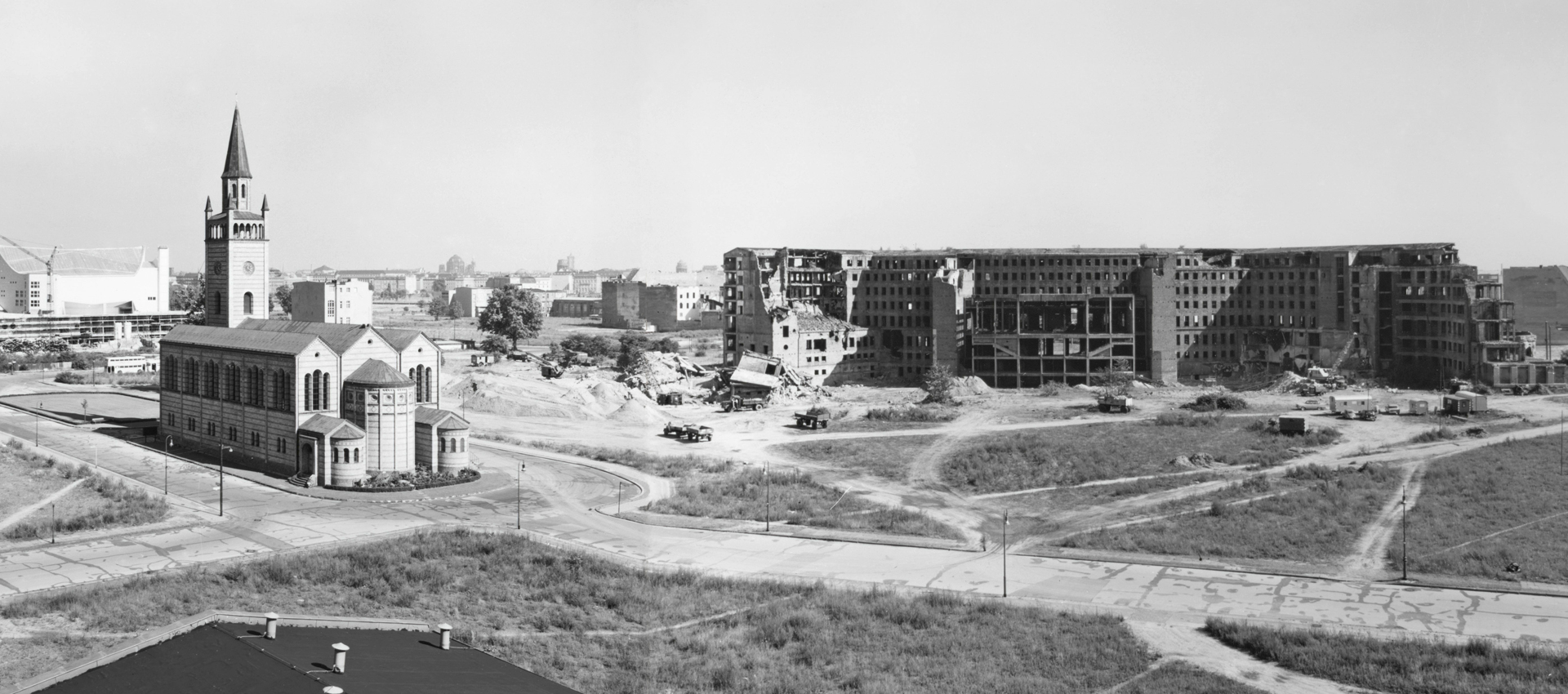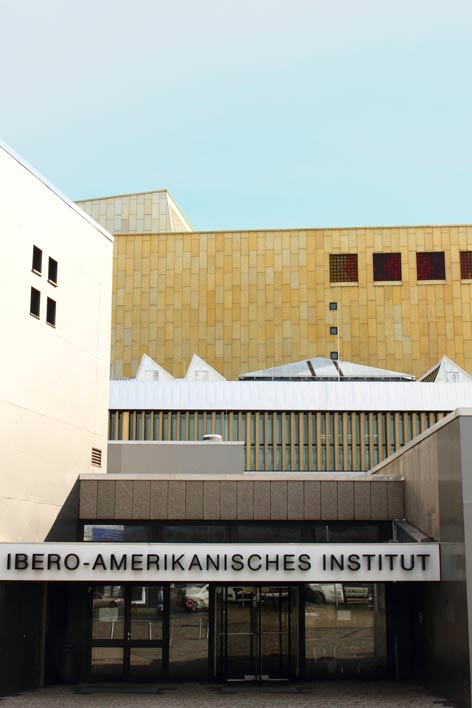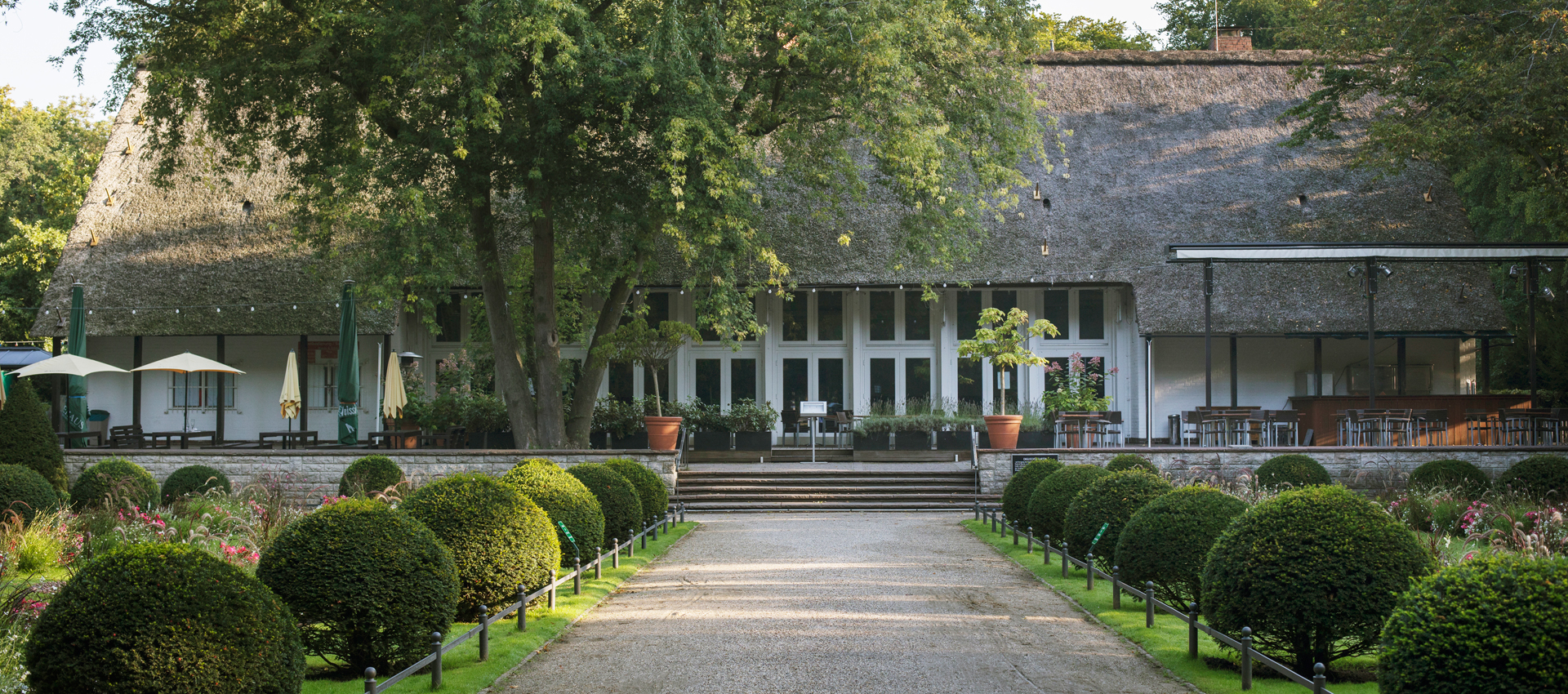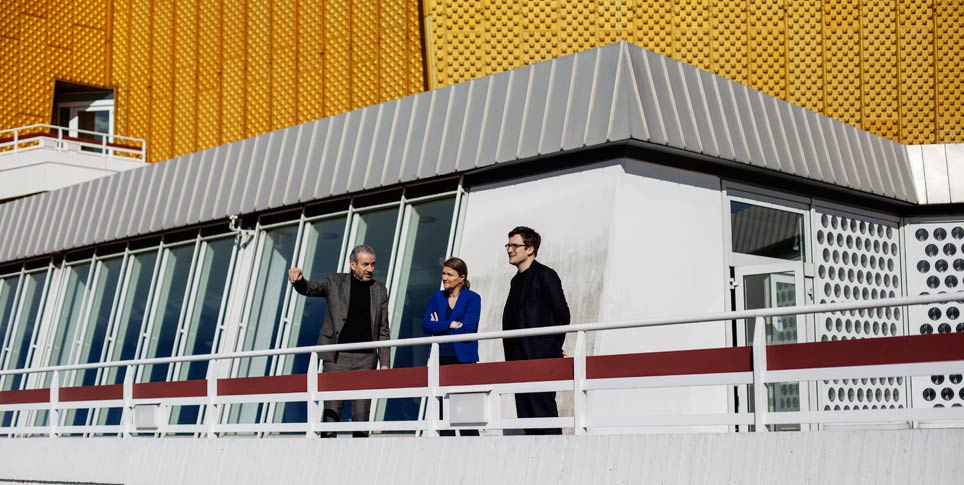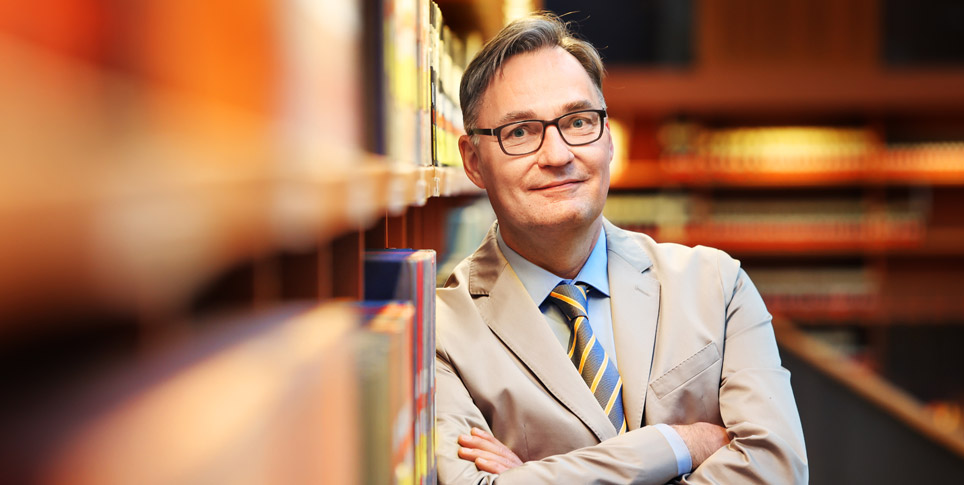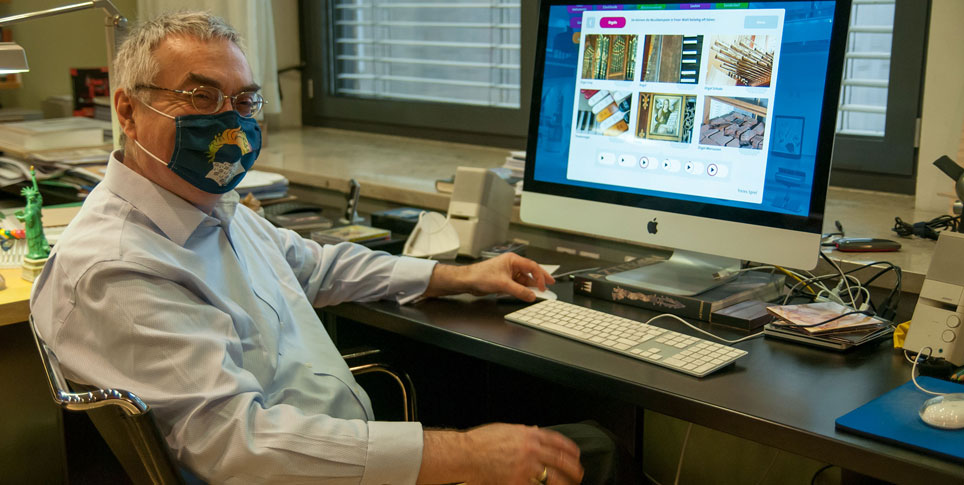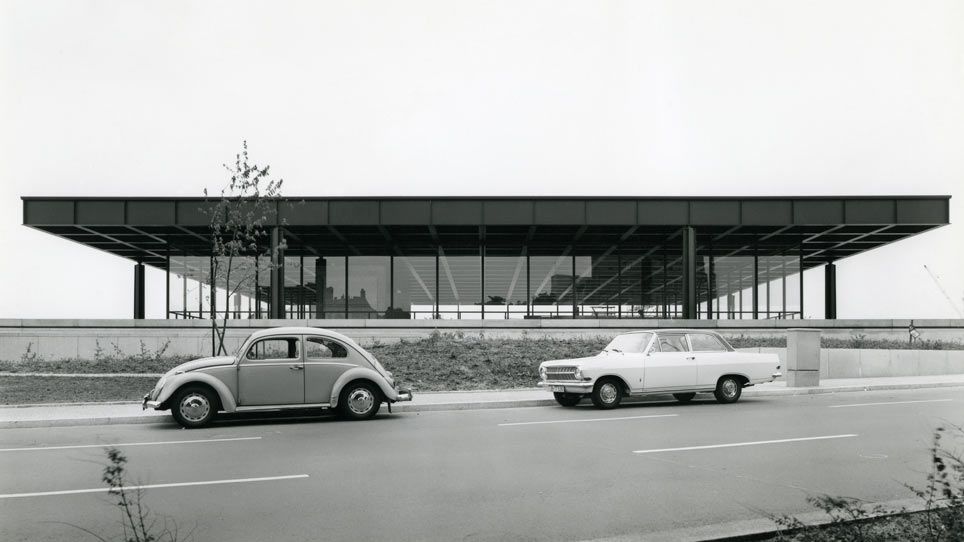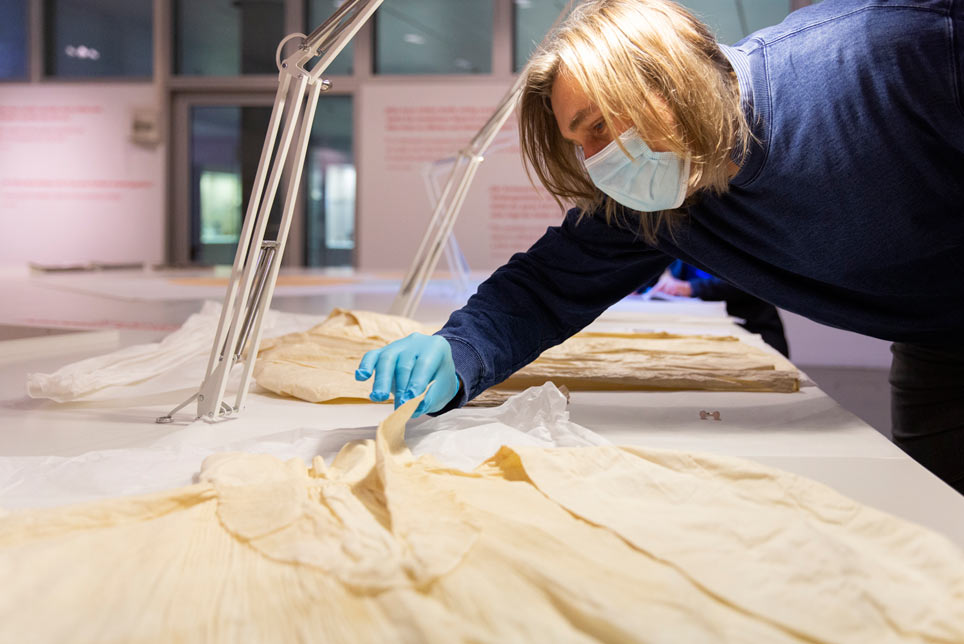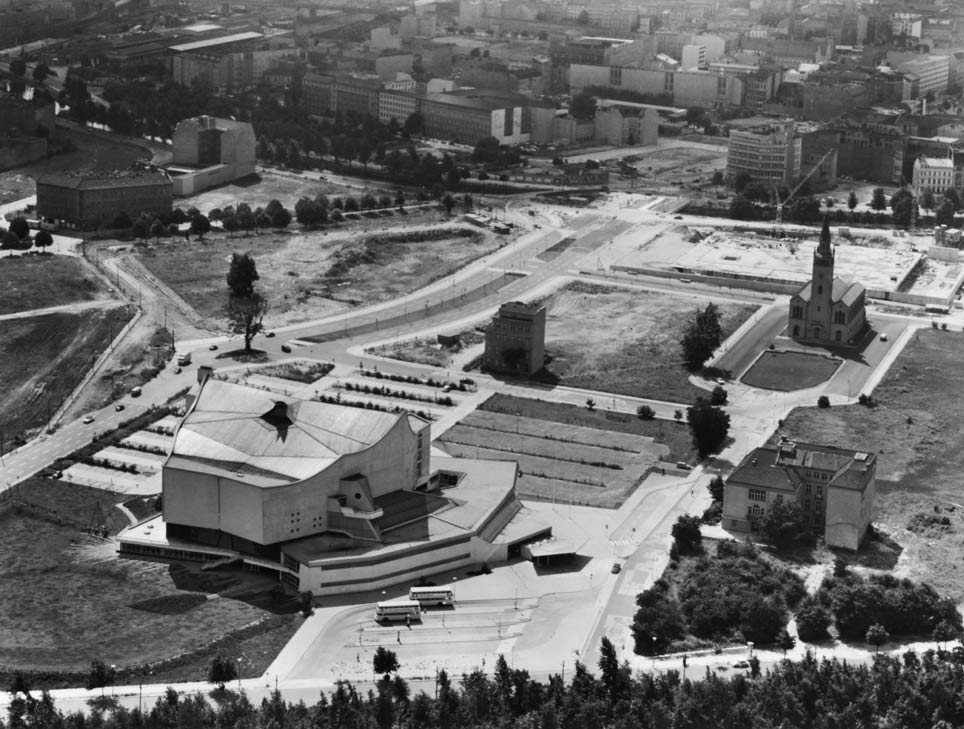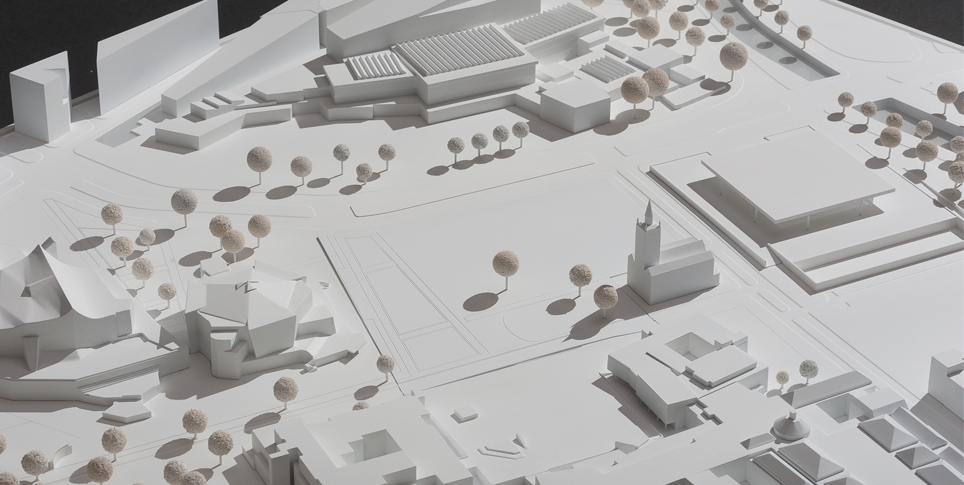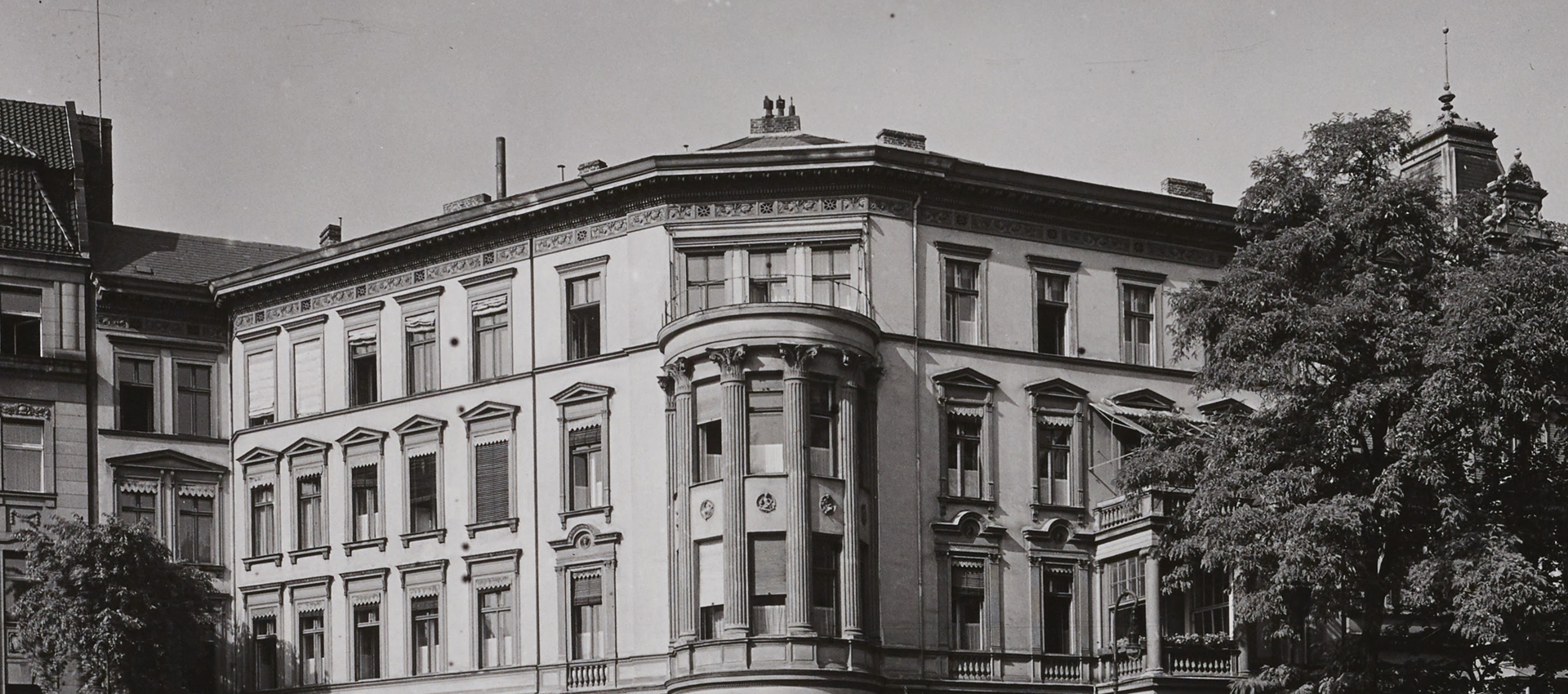Island hopping in sneakers – a tour of the Kulturforum
The skateboard rattles down the steps, clickety-clack, clickety-clack. Today is one of those days when the vast concrete landscape at the Kulturforum belongs mostly to the wind and the skaters. What you don't see, from the outside, is the abundance of cultural heritage concentrated here. The true wealth of this cultural epicenter of Berlin becomes apparent only when you pass through the doors of the individual institutions and take a look around the collections.
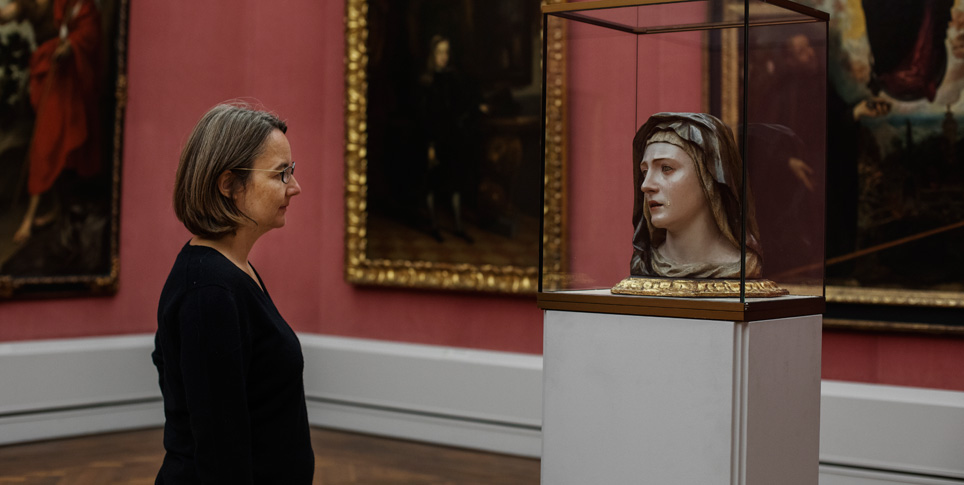
Art critic Elke Buhr marvels at the artistic, historical and cultural treasures to be found in the Kulturforum’s many museums. © Christoph Mack
The Neue Nationalgalerie won't reopen for a few months yet. But there is enough to do anyway – infection rates permitting. There is the Gemäldegalerie with one of the world's finest collections of paintings from the 13th to the 18th century; the Kupferstichkabinett (Museum of Prints and Drawings) with 500,000 prints and approximately 110,000 other artworks on paper; the Kunstgewerbemuseum (Museum of Decorative Arts) with its exquisite collection of handicrafts and design classics; and finally, the Musikinstrumenten-Museum (Museum of Musical Instruments), which is part of the Staatliches Institut für Musikforschung (State Institute for Music Research). This is where I start my tour of the collections at the Kulturforum. And it's with comfortable sneakers on my feet – I have a lot of ground to cover, after all. I'm not so naive as to think I can take in all of these collections, even if I were to limit myself to a superficial view. The task that I have set myself instead is to narrow down the scope of my tour radically – to one highlight per museum.
Of course, deciding what to focus on is difficult straightaway, at the very first place that I visit. The flowing, open spaces of the building’s interior unfold around the islands of an archipelago. Here among the musical instruments, there is a spinet with fantastic wood inlays, a harpsichord said to have been played by J.S. Bach, and flutes owned by King Frederick II.
Ultimately, though, I settle on an instrument whose name alone inspires flights of fancy. The Mighty Wurlitzer is a theater organ of the kind used to accompany silent films. These organs were used throughout the world until the 1930s, and they can reproduce the sounds of an entire orchestra. Individual instruments are played from the control console in the same way that pipes are activated in a traditional organ.
The Berlin model was custom-built for the industrialist Werner Ferdinand von Siemens, who installed it in his villa in 1929. It must have been a large villa, because the glamorous console is only the tip of the iceberg, so to speak. From this control panel, the player can operate a battery of instruments, from timpani to tuba, which take up half of the upper floor of the museum.
I firmly resolve not to miss the next, albeit rare concert with the Mighty Wurlitzer – there's bound to be another one sooner or later. Until then, it's onward to the Kunstgewerbemuseum. The museum is housed in a concrete building designed in 1966. And it does emanate the defiant, exposed-concrete charm of its era, with some added allure from a face-lift carried out by architects Kuehn Malvezzi in 2014. The lower level presents classic furniture from the Bauhaus period up to the present.
The fashion gallery is also inviting. You walk, as though window shopping, through a series of darkened rooms, past dramatically lit display cases with designs from the past 150 years of fashion history. After that, I become absorbed in the cabinets with the art deco pieces. My chosen highlight, though, is an older marvel of craftsmanship. It’s a reliquary of gold and silver set with pearls and gems – the work of skilled hands somewhere in France during the eighth century. The piece is one of the treasures of St. Dionysius' Abbey of Enger near Herford. And it looks like an It bag. They should send the designers from Hermès and Dior over to have a look.
But enough of the handbag reveries – I am expected in the Kupferstichkabinett. The really spectacular thing here is the study room. The Kupferstichkabinett is not just a museum with exhibitions but also a place of research; you can have works brought to you here just as you can in a library. You can come with or without an appointment, show your ID and then look at originals from the collection.
Where to begin? I decide to go for the absolute classics of art history. In the display case devoted to Dürer, I have already marveled at the famous likeness of his mother as a careworn old woman. Now the director of the Kupferstichkabinett, Dagmar Korbacher, brings me a coquettish, curly-haired boy drawn sometime around 1518 by Raphael, who roughed out the naked body on paper as a sketch for the figure of Pluto in a fresco at the Villa Farnesina in Rome. With some hesitation, I take the magnifying glass and examine the fine lines and can't believe that I'm permitted to get so close to this piece of paper.
Now it's time for my last stop, the Gemäldegalerie. For me, this is a visit to old friends: I come here often, and I enjoy the fact that although the paintings of Giotto, Raphael and Titian are world-famous, they seldom disappear behind an excessively large gaggle of visitors. The entire circuit of the 72 rooms is almost two kilometers long. Today, though, I head straight to my favorites. The Gemäldegalerie has a captivating Venus by Botticelli, but when it comes to captivating naked ladies, I also like to have a look at Lucas Cranach’s Lucretia, aiming her dagger in the ultimate act of self-sacrifice. The Renaissance master adorns her with a gossamer-thin veil that tends to emphasize her nakedness rather than conceal it. The days when women sacrificed themselves for virtue are long gone – but then again, looking at art this old, across the centuries, is an encounter with something foreign and unfamiliar. Whether I would have taken any liking to the ruffian and killer Caravaggio, I don't know. But I adore his Amor, one of the most famous pictures in the collection.
Who knows how many kilometers I've walked today to get to him? Only one thing is certain: I can return again and again, and I'll always see something new at the Kulturforum.
